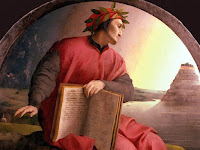Renaissance Scientists
Ptolemy
Ptolemy was an
astronomer and mathematician during ad 100-170 whose idea of the geocentric
theory that the earth is the center of the universe overpowered other
astronomical thought until the 17th century. He has also been remembered for
his contributions to the fields of mathematics, optics, and geography. Ptolemy
made important historical inventions like the map of the known world that uses
latitude and longitude.
Nicolaus Copernicus
Copernicus was
a Polish astronomer from 1473-1543 who was best known for his astronomical
theory that the sun is at rest near the center of the universe and that the
earth, spinning on its axis once daily, revolves annually around the sun. This theory is called the heliocentric or sun-centered system.
Johannes Kepler
Johannes
Kepler was a German astronomer who made important discoveries that led to three
basic laws governing the motion of planets, and these made him one of the chief
founders of modern astronomy. Johannes was very interested in Copernicus’s
theory and looking into it further. Eventually, he constructed a credible model
of our solar system by using what Copernicus’s research had taught us and by
using his own research.
Galileo Galilei
Galileo Galilei, often referred to as simply Galileo, was an Italian physicist, mathematician, astronomer, and philosopher. Galileo had many achievements, including telescopic confirmation of the phases of Venus, discovering the four largest satellites of Jupiter, and the analysis of sunspots. Galileo also invented the improved military compass and other scientific instruments. Galieo played a major role in the Scientific Revolution.
Sir Isaac Newton
Sir Isaac
Newton was an English physicist and mathematician. Newton contributed to optics
and shares credit with Gottfried Leibniz for the invention of infinitesimal
calculus. Newton also formulated the laws of motion and universal gravitation
that largely influenced scientists’ thoughts on the physical world. He is
considered one of the most influential scientists of all time.
Rene Descartes
Rene Descartes
was a French philosopher and mathematician. He is considered the “Father of
Modern Philosophy” and his book Meditations of First Philosophy is
a textbook at most universities. He is also credited as the creator of analytical
geometry, which was crucial to the discovery of infinitesimal calculus. He was
a key figure in the Scientific Revolution and is often used as an example of
genius.
Francis Bacon
Francis Bacon was an English philosopher, statesman, scientists, jurist, and author. He was very influential through his work, especially as a philosophical advocate and establisher of the scientific method. He has also been called the creator of empiricism, or the theory that all knowledge comes from sense-experience. The scientific method is still used today as a procedure of investing natural ideas or objects.












































